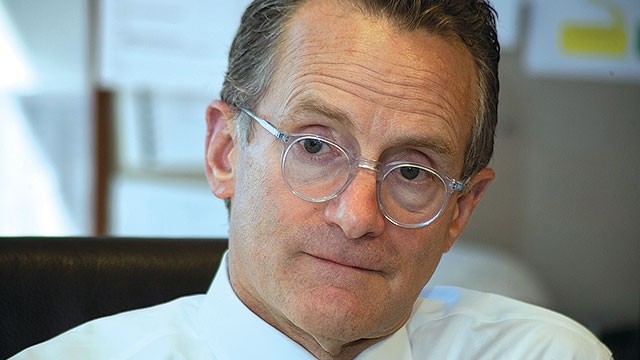August 10, 2012
by Liz Ann Sonders, Senior Vice President, Chief Investment Strategist, Charles Schwab & Co., Inc.
and Brad Sorensen, CFA, Director of Market and Sector Analysis, Schwab Center for Financial Research
and Michelle Gibley, CFA, Director of International Research, Schwab Center for Financial Research
Key Points
- The scheduled possible catalysts for the market have come and gone, giving the market a modest upward bias, but we now appear to be firmly in the dog days of summer. Low volume and little conviction may dominate through Labor Day but investors need to stay vigilant and now is a good time to prepare for the potential fireworks in the fall.
- The recent Federal Reserve meeting yielded no new action, but policy makers reiterated that they will act if necessary. This is a nice sentiment, but we are skeptical that more stimulus measures would have a lasting impact on the economy or the market.
- A waiting game has ensued in Europe as investors look for action following hopeful comments from various officials. But despite concerns over corn prices, we believe central banks will continue to ease, helping to support global growth.
NOTE: The next Schwab Market Perspective will be published one week later than normal-August 31, 2012.
In the past two weeks, we have seen the Federal Reserve and the European Central Bank meet, 2Q earnings season largely wind down, another trading "glitch," and still more political posturing on both sides of the Atlantic. Stocks, meanwhile, have continued to trade within roughly the same price range that we've seen for a couple of months, but with a modest upward bias that may surprise investors. While this can be frustrating at times, it is interesting to note that the broad market is up more than 6% since May 31, apparently, at least for now, bucking the conventional wisdom of "sell in May, go away." This illustrates our common refrain that no one can consistently and accurately predict the direction of the market in the near term, and reinforces the importance of appropriate diversification of investment assets.
Now that we've moved passed the scheduled possible market moving events, and appear to be in a bit of a quiet period with no apparent market-moving catalysts on the calendar, it is a great time for investors to make sure their asset allocation matches their risk tolerance and their investments are appropriately diversified for when the action seems certain to heat up this fall. For the near term, we expect continued muted action in a rough trading range as politicians and major Wall Street investors are largely on vacation, and central bankers are between meetings. For now, we expect activity to heat up beginning in late August when the Fed holds its annual get-together in Jackson Hole, Wyoming. Fed Chairman Ben Bernanke has previously made market-moving comments at this event.
Keep an eye on the economy
Despite the temptation to forget the market as summer winds down, we suggest investors keep at least one eye on stocks and the economy as market-moving events can occur at any time. Additionally, economic data will continue to roll in, which could have an impact on stocks in the near term and potentially spark Federal Reserve action at its meeting in mid-September. Recent data have continued to tell a largely slow-growth story in the US. Regional manufacturing surveys remained mixed around the flatline, with the Dallas Fed Index falling to its lowest level since September 2011, but the Chicago PMI getting a slight bump higher and remaining in territory depicting expansion. On the national level, the Institute for Supply Management (ISM) Manufacturing Index stayed roughly flat at 49.8, the second month in a row in territory depicting contraction, while new orders moved up slightly but the employment component fell to 52.0 from 56.6.
US manufacturing appears to be weakening
Source: FactSet, Institute for Supply Management, US Dept. of Labor. As of August 6, 2012.
On the service and consumer fronts, we saw the ISM non-Manufacturing Index move higher, to 52.6 from 52.1 in the previous month. Unfortunately, the employment component of this report also fell, to 49.3 from 52.3. Also, personal spending was flat, further confirming at least a cautious consumer that was evident earlier by a third-straight month of lower retail sales.
Certainly the continued weak recovery in the labor market is contributing to the cautiousness of the consumer. According to the recently released unemployment report from the Labor Department, the unemployment rate remains elevated at 8.3%, up slightly from the previous month, while jobs continue to be added at a relatively anemic pace, although better than the previous few months, with a better-than-expected 163,000 jobs added during July. While still not considered rapid-enough job growth to meaningfully bring down the unemployment rate, it is at least somewhat encouraging that the US continues to add jobs and that the more forward-looking indicator of initial jobless claims remains well below the key 400,000 level, suggesting that the employment picture, while murky, continues to improve—albeit too slowly for most people.
Fed holds, but stands ready to act—in contrast to Congress
Both the Federal Reserve and politicians are included in the group that is dissatisfied with the pace of improvement in the labor market. In the statement following the most recent Federal Open Market Committee meeting, policy makers noted that they expect unemployment to decline "only slowly" and that, while holding monetary policy constant, they are ready to "provide additional accommodation as needed to promote a stronger economic recovery and sustained improvement in the labor market."
This is a nice sentiment, but we continue to question what new "accommodation" would have a lasting impact on either the economy or the market. The problem does not appear to be a lack of liquidity. Companies appear to have plenty of cash on their balance sheets that they could put to work.
Cash doesn't appear to be the problem.
Source: FactSet, Federal Reserve. As of August 6, 2012. * Cash includes: check deposits & currency, commercial paper, foreign deposits, money market funds shares, mutual funds shares, time deposits & savings, and govt. agency & Treasury securities.
This development must be frustrating to Bernanke and his colleagues as it doesn't follow the traditional script of monetary easing. Typically, the Fed reduces interest rates or, in the case of quantitative easing, pushes cash into the economy, and businesses borrow at those reduced rates and use that cash for capital investment and/or hiring new employees. Those new employees then have more money to spend at other businesses, starting the cycle all over again. As you can see, however, this time around businesses appear to be content to keep that cash—short-circuiting the virtuous loop that the Fed hoped to facilitate. The Federal Reserve can't force demand to increase, as far as we know, leaving it limited options to actually influence economic activity.
This brings us to policymakers down the street in Washington in Congress and the Obama Administration. While Congress is currently out of session, political posturing never ceases—and that is even more true as we approach a presidential election. Businesses continue to cite uncertainty about regulation and especially the tax code as hindrances to their willingness to take on risk and invest in their businesses. Unfortunately that seems unlikely to change soon as the possibility of any substantial progress being made prior to the November election seems remote and the so-called "fiscal cliff" grows ever closer—not exactly the confidence-boosting action that appears to be needed from Washington.
Waiting game in Europe
Like the Federal Reserve, the European Central Bank (ECB) held off on providing immediate measures at its August policy meeting, and markets have been left to speculate about whether the ECB will "walk the walk" after promising to do "whatever it takes" to preserve the euro.
While the lack of immediate action disappointed markets, we found both negatives and positives after the ECB meeting:
- Potential positive and negative: conditional help. Sequence of events is important for ECB action – countries must ask for help first from the bailout funds of the temporary European Financial Stability Facility (EFSF) and permanent European Stability Mechanism (ESM), then the ECB may undertake open market operations. Additionally, countries must commit to "conditionality" in the form of fiscal austerity and structural reforms in exchange for ECB help. While this may delay action, it could also force countries to make much-needed reforms.
- Negative: lack of urgency. The details of what the ECB’s "open market operations" will entail will be figured out "in coming weeks."
- Negative: firepower of the ESM cannot yet be enlarged via a banking license.
- Negative: health of European banks is still not addressed, neither is the negatively reinforcing link between banks and sovereigns.
- Positive: seniority concerns would be addressed in future actions. Prior purchases negatively affected investor perception, because the more the ECB purchased, the potential that bondholders would be further subordinated grew because the ECB’s bond holdings had seniority.
- Positive: future potential purchases would be of "adequate size" to reduce sovereign debt risk premium to reach its objective to improve the working of the monetary policy transmission channel. In other words, the ECB indicated it is prepared to purchase as much debt as necessary to keep yields at the short-end of the yield curve under control.
- Key potential positive: possible purchases may not be sterilized. Prior purchases were sterilized – any infusions of money from the ECB into the financial system were withdrawn completely by the ECB issuing seven-day bills of the same amount. If the ECB begins unsterilized purchases (which would be more similar to the asset purchases made by the Fed), there is the potential for a larger total and the result would likely increase the amount of money banks could lend.
While the ECB has yet to provide details, there are at least two aspects of the crisis that could potentially change and stabilize the crisis. First, firepower could be bolstered in a dual-barreled approach if the ECB makes unsterilized sovereign bond purchases in tandem with countries tapping the EFSF/ESM bailout funds. Secondly, while some view "conditionality" as a negative hurdle that would delay action, we regard it as a potential positive. By forcing countries to commit to fiscal targets and reforms, resistance to bond purchases could soften - already, the traditional "northern front" of countries appeared to weaken their opposition within the ECB, with only Germany's central bank president Weidmann named as resistant. Even within Germany there appears to be a growing recognition that more needs to be done to fight the crisis, and various members of the German government have backed the ECB's proposal.
Markets are now in a waiting game – waiting for the details from the ECB on whether potential purchases will be unsterilized and waiting to see if Spain in particular will ask for aid. Spain may hold off due to negatives of a perceived loss of sovereignty and watchful eye of a formal bailout, and amid some uncertainty as to whether more onerous requirements would be imposed or not. Hope for Spain stems from comments from the International Monetary Fund's (IMF's) Lagarde, who said that if Spain were in a bailout program, the IMF would not ask Spain for much more than what it has done and is committed to doing.
Bottom line? Leaving the market in limbo is a risky game—lack of action could result in confidence slipping and another sell-off in Europe. Conversely, there is also the potential for fierce rallies as expectations and valuations appear low, and the potential for upside surprises appears elevated. Amid the volatility, we caution against making drastic investment decisions on European stocks until there is more clarity.
Where is global growth headed?
Looming uncertainty from the euro-zone debt crisis, the US fiscal cliff, and the potential for a hard landing in China has weighed on global growth. Amid the doom, it may be surprising that global activity has remained in expansion territory and even moved higher last month.
Global activity not that bad?
Source: FactSet, Bloomberg. As of August 7, 2012.
Manufacturing deterioration is well known, but under the radar, the service sector globally has remained resilient. It is unclear if the service sector can continue to hold out with job pressure globally and the traditionally leading global manufacturing PMI falling to 48.4 in July, the lowest level since June 2009.
We remain relatively optimistic about global growth amid continued central bank easing, a key difference from the slowdowns in both 2010 and 2011. Although the drought in the United States and spike in corn prices may have some questioning the potential for inflation in the future, this could halt central bank easing.
We believe there are factors that could keep food inflation overall in check:
- Food prices consumers pay are less volatile than the underlying commodity prices.
- Corn prices are flat versus a year ago, and the impact on the economy usually occurs later.
- Grain prices could stabilize due to substitution, an increase in supply in response to high prices, a relaxation of ethanol regulations, and other factors.
- Not all food commodities are higher priced.
Overall food prices not yet a major concern
Source: FactSet, Commodity Research Bureau. As of August 7, 2012.
We believe the rise in food prices is not yet a major concern for developed-market stock performance. According to Ned Davis Research, since 1980, the S&P 500 Index typically incurs trouble once the CRB Foodstuff sub-index rises at a yearly rate of 15% or more, versus the -10% rate currently.
Rising food prices, however, could reduce the attractiveness of emerging market stocks if prices increase further, because spending on food consumes two to five times more of incomes in these countries than in developed countries. Positively, prices for the important staple of rice remain subdued.
Read more international research at www.schwab.com/oninternational.
So what?
While it can seem like a dead period in the market and few potential market-moving events are scheduled in the next few weeks, we've seen that surprises can come at any time. In fact, recently, we've seen a good deal of action in the traditionally slow month of August that leads us to suggest investors remain alert. Again, maintaining a diversified portfolio is important and potential volatility over the next few months should give investors opportunities to sell into sharp rallies and buy on steep dips as needed to position your portfolio appropriately for risk tolerances and time horizons.
Important Disclosures
The MSCI EAFE® Index (Europe, Australasia, Far East) is a free float-adjusted market capitalization index that is designed to measure developed market equity performance, excluding the United States and Canada. As of May 27, 2010, the MSCI EAFE Index consisted of the following 22 developed market country indexes: Australia, Austria, Belgium, Denmark, Finland, France, Germany, Greece, Hong Kong, Ireland, Israel, Italy, Japan, the Netherlands, New Zealand, Norway, Portugal, Singapore, Spain, Sweden, Switzerland and the United Kingdom.
The MSCI Emerging Markets IndexSM is a free float-adjusted market capitalization index that is designed to measure equity market performance in the global emerging markets. As of May 27, 2010, the MSCI Emerging Markets Index consisted of the following 21 emerging-market country indexes: Brazil, Chile, China, Colombia, the Czech Republic, Egypt, Hungary, India, Indonesia, Korea, Malaysia, Mexico, Morocco, Peru, Philippines, Poland, Russia, South Africa, Taiwan, Thailand and Turkey.
The S&P 500® index is an index of widely traded stocks.
Indexes are unmanaged, do not incur fees or expenses and cannot be invested in directly.
Past performance is no guarantee of future results.
Investing in sectors may involve a greater degree of risk than investments with broader diversification.
International investments are subject to additional risks such as currency fluctuations, political instability and the potential for illiquid markets. Investing in emerging markets can accentuate these risks.
The information contained herein is obtained from sources believed to be reliable, but its accuracy or completeness is not guaranteed. This report is for informational purposes only and is not a solicitation or a recommendation that any particular investor should purchase or sell any particular security. Schwab does not assess the suitability or the potential value of any particular investment. All expressions of opinions are subject to change without notice.
The Schwab Center for Financial Research is a division of Charles Schwab & Co., Inc.












